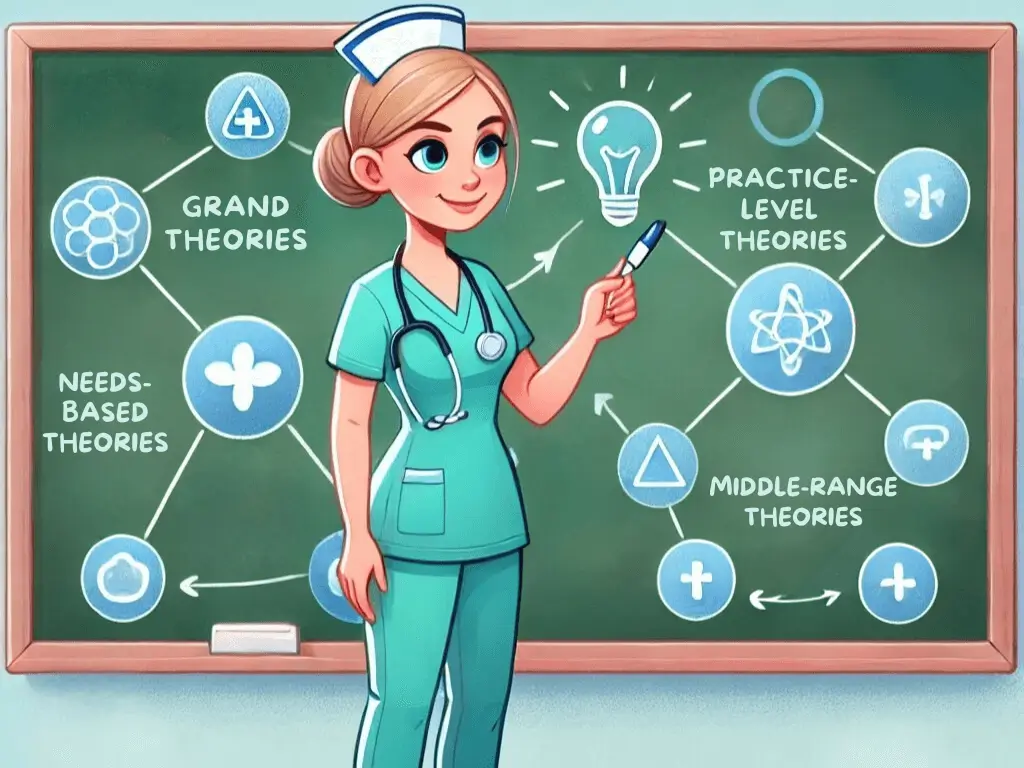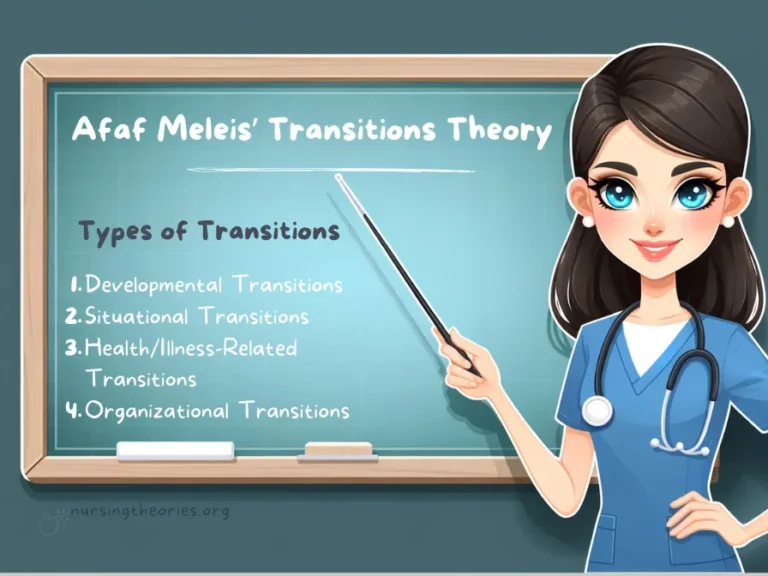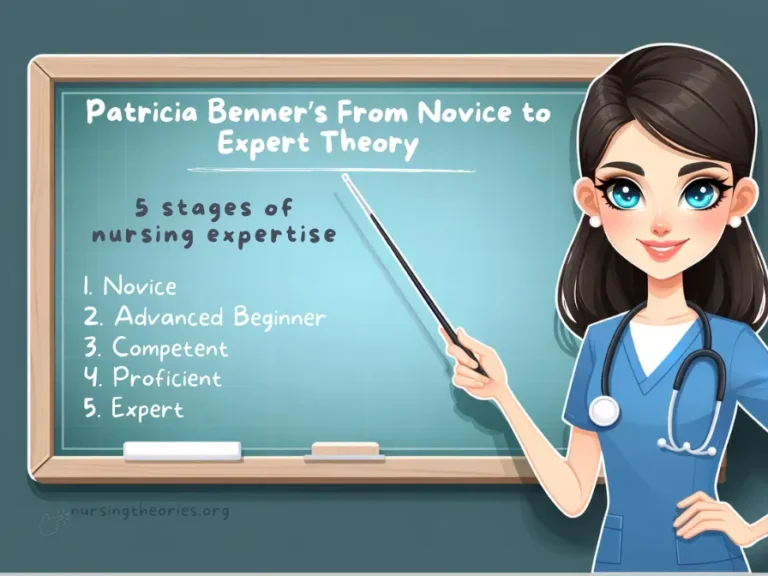Nursing theories are essential frameworks that define the profession, guiding clinical practice, education, and research.
They help nurses understand, explain, and predict phenomena in patient care, offering a structured way to approach complex situations.
However, with so many theories available, it’s crucial to classify them to better understand their scope, focus, and application.
Classifying nursing theories allows nurses to identify which theories are most relevant to specific contexts, whether it’s delivering patient care, teaching nursing students, or conducting research.
These classifications also provide a logical framework for progressing from foundational, abstract concepts to more specific, actionable strategies.
In this article, we’ll explore the various ways nursing theories are classified, including by abstraction, goal orientation, and other criteria such as paradigm and function.
By understanding these classifications, nurses can choose and apply theories that best meet the needs of their patients and professional goals.

What You’ve Learned
- Nursing theories can be classified by abstraction: Grand theories provide broad philosophical frameworks, middle-range theories focus on specific aspects of care, and practice-level theories offer actionable guidance for daily clinical tasks.
- Goal orientation classifications address purpose: Descriptive theories explain “what” phenomena exist, explanatory theories uncover “why” relationships occur, and prescriptive theories guide “how” nursing interventions should be performed.
- Classifications by paradigm offer diverse perspectives: Theories align with different worldviews, such as particulate-deterministic (cause-and-effect focus), interactive-integrative (emphasizing relationships), and unitary-transformative (holistic, dynamic systems).
- Function-based classifications support specific roles: Administrative theories aid leadership, educational theories guide teaching, and practice theories focus on clinical interventions like wound care or pain management.
- Classifying nursing theories enhances practice, education, and research: These classifications provide frameworks for selecting theories that address specific challenges, guide curricula, and focus research efforts, leading to improved patient outcomes and professional growth.
Classification by Abstraction
One of the most common ways to classify nursing theories is by their level of abstraction.
Abstraction refers to how broad or specific a theory is in scope.
Theories range from highly abstract, conceptual frameworks that define the philosophy of nursing, to very specific, practical guidelines for patient care.
This classification includes grand nursing theories, middle-range nursing theories, and practice-level nursing theories.
1) Grand Nursing Theories
Definition:
Grand nursing theories are the most abstract and broad in scope.
They provide a general framework for understanding nursing practice and often address the core concepts of the nursing metaparadigm — Person, Environment, Health, and Nursing.
While they shape the philosophy of nursing, they are not designed to offer specific guidelines for clinical practice.
Characteristics:
- Focus on overarching ideas rather than detailed applications.
- Provide a foundation for developing middle-range and practice-level theories.
- Difficult to test empirically due to their abstract nature.
Examples:
- Martha Rogers’ Science of Unitary Human Beings: This theory views patients as energy fields interacting with the environment. It emphasizes the holistic nature of nursing care, focusing on harmony and well-being rather than isolated conditions.
- Margaret Newman’s Health as Expanding Consciousness: Newman defines health as a dynamic process of expanding awareness. This theory encourages nurses to see patients as whole beings and to foster growth and understanding in their care.
Think of it as…
The philosophical blueprint of nursing — it defines the “why” behind what nurses do.
2) Middle-Range Nursing Theories
Definition:
Middle-range nursing theories are more specific than grand theories and focus on particular aspects of nursing care.
They are practical, testable, and often developed from empirical research or observations in clinical practice.
Characteristics:
- Address specific phenomena or concepts within nursing.
- Provide guidance for clinical interventions.
- Easier to validate through research.
Examples:
- Hildegard Peplau’s Theory of Interpersonal Relations: This theory focuses on the nurse-patient relationship, describing how effective communication and collaboration improve patient outcomes.
- Katharine Kolcaba’s Theory of Comfort: Kolcaba’s theory identifies comfort as a fundamental need and provides practical strategies for enhancing physical, emotional, and spiritual well-being.
Practical Application:
In palliative care, nurses can use Kolcaba’s theory to assess and address the comfort needs of patients and families, improving overall satisfaction and quality of life.
Think of it as…
The practical toolkit — it bridges theory and practice by offering actionable guidance.
3) Practice-Level Nursing Theories
Definition:
Practice-level nursing theories are the most specific and narrow in scope.
These theories are directly focused on particular patient care situations and are often used to guide daily nursing interventions.
Characteristics:
- Provide direct, actionable guidance for specific clinical scenarios.
- Developed based on experience and empirical evidence.
- Limited in scope but highly applicable.
Examples:
- Pain Management Theories: These theories guide nurses in assessing and addressing pain through both pharmacological and non-pharmacological interventions.
- Wound Care Theories: Provide protocols for managing and promoting healing in acute and chronic wounds.
Practical Application:
A nurse caring for a post-operative patient uses a practice-level theory to assess pain levels, administer appropriate medications, and evaluate the effectiveness of interventions.
Think of it as…
The bedside manual — it focuses on the “how” of nursing practice, ensuring care is effective and evidence-based.
Classification by Goal Orientation
Another way to classify nursing theories is by their intended purpose or goal.
This classification focuses on what the theory aims to achieve — whether it is to describe phenomena, explain relationships, or guide actions.
These include descriptive theories, explanatory theories, and prescriptive theories.
1) Descriptive Theories
Definition:
Descriptive theories focus on identifying and describing nursing phenomena.
They aim to answer “what” questions, providing a detailed understanding of events, processes, or situations without exploring the relationships between concepts.
Purpose:
- Name and classify nursing phenomena.
- Lay the groundwork for further theoretical development and research.
Examples:
- Theories describing the stages of illness or recovery.
- Developmental theories that outline human growth stages and their implications for nursing care.
Practical Application:
A descriptive theory might be used to explain the different stages of grief a patient experiences after receiving a terminal diagnosis, helping nurses provide appropriate emotional support.
Think of it as…
A detailed map that identifies all the landmarks but doesn’t yet explain how they are connected.
2) Explanatory Theories
Definition:
Explanatory theories go a step further by exploring the relationships between concepts.
They aim to answer “why” questions, providing insights into the cause-and-effect dynamics within nursing care.
Purpose:
- Explain how different concepts interact.
- Predict outcomes based on observed relationships.
Examples:
- Peplau’s Theory of Interpersonal Relations: Explains how effective communication between nurses and patients fosters trust and improves outcomes.
- Theories on stress and coping, which explore how external stressors influence patient behavior and recovery.
Practical Application:
A nurse working with a patient experiencing chronic pain might use an explanatory theory to understand how pain impacts emotional well-being and how emotional support can improve the patient’s response to treatment.
Think of it as…
The “why” behind the landmarks — it connects the dots to reveal relationships and patterns.
3) Prescriptive Theories
Definition:
Prescriptive theories focus on guiding nursing interventions and specifying desired outcomes.
They answer “how” questions, offering practical frameworks for implementing care.
Purpose:
- Provide actionable steps for nursing practice.
- Guide the design of care plans and interventions.
Examples:
- Kolcaba’s Theory of Comfort: Guides nurses in creating interventions to enhance comfort, such as managing pain or reducing anxiety.
- Protocols for post-operative care that outline specific steps to prevent complications and promote healing.
Practical Application:
A nurse in a post-surgical unit might use a prescriptive theory to guide pain management strategies, including regular assessments, administering medications, and offering non-pharmacological comfort measures like relaxation techniques.
Think of it as…
A practical guidebook — it offers clear instructions to achieve desired outcomes.
Other Classifications
Beyond abstraction and goal orientation, nursing theories can also be classified based on paradigms, function, and the background of the theorist.
These alternative classifications provide further context and specificity, helping nurses and educators select theories that align with particular needs or perspectives.
Classification by Paradigm
Paradigms represent overarching worldviews that shape how nursing phenomena are understood.
Theories can be grouped by their alignment with one of three major paradigms:
- Particulate-Deterministic Paradigm:
- Focuses on cause-and-effect relationships and measurable outcomes.
- Example: Theories that emphasize the biological causes of disease and the effectiveness of specific interventions, such as infection control protocols.
- Interactive-Integrative Paradigm:
- Highlights interactions between patients, nurses, and environments.
- Example: Peplau’s Theory of Interpersonal Relations, which explores how nurse-patient communication affects outcomes.
- Unitary-Transformative Paradigm:
- Views patients as dynamic, holistic systems constantly interacting with their environment.
- Example: Rogers’ Science of Unitary Human Beings, which emphasizes harmony and energy flow.
Practical Application:
A nurse addressing a patient’s stress might use the interactive-integrative paradigm to assess how family dynamics, work environment, and self-care practices impact their well-being.
Classification by Function
Nursing theories can also be grouped by their functional focus, reflecting their primary purpose in the profession:
- Administrative Theories:
- Focus on leadership, management, and organizational behavior in nursing.
- Example: Theories that guide effective team management in hospital settings.
- Educational Theories:
- Shape nursing curricula and teaching methods.
- Example: Theories emphasizing the progression from novice to expert, such as Patricia Benner’s From Novice to Expert framework.
- Practice Theories:
- Directly address specific clinical practices or procedures.
- Example: Theories on pressure ulcer prevention or medication administration protocols.
Practical Application:
In a teaching hospital, educational theories might guide preceptors in mentoring new nurses, while administrative theories inform leadership practices.
Classification by Theorist’s Background
A theorist’s professional focus often influences the development of their theory, leading to classifications based on the central themes they emphasize:
- Needs-Based Theories:
- Focus on meeting patient needs as the core of nursing practice.
- Example: Virginia Henderson’s Need Theory, which outlines 14 basic human needs that guide nursing care.
- Interaction-Based Theories:
- Emphasize the importance of communication and relationships in nursing.
- Example: Hildegard Peplau’s Theory of Interpersonal Relations, which focuses on the therapeutic nurse-patient relationship.
- Outcome-Based Theories:
- Concentrate on achieving specific health outcomes.
- Example: Dorothea Orem’s Self-Care Deficit Theory, which focuses on empowering patients to meet their own self-care needs.
Practical Application:
In chronic disease management, outcome-based theories help nurses design care plans that empower patients to achieve independence in managing their condition.
Practical Applications of Classifying Nursing Theories
Classifying nursing theories is not just an academic exercise — it has real-world benefits that enhance nursing practice, education, and research.
By understanding the classifications, nurses can select theories that best address specific challenges, foster professional growth, and improve patient outcomes.
Enhancing Clinical Practice
The classification of nursing theories helps nurses choose frameworks that align with their clinical needs.
Whether addressing broad philosophical concepts or solving specific problems, theory selection improves the quality and effectiveness of care.
Example in Practice:
In palliative care, Kolcaba’s Theory of Comfort (a middle-range, prescriptive theory) can guide nurses in assessing and addressing the comfort needs of patients and their families, ensuring holistic and compassionate care.
Key Insight:
Classifications provide a roadmap for matching the right theory to the right scenario, making care more targeted and effective.
Supporting Education and Training
In nursing education, classifications help instructors structure curricula that introduce students to theories progressively — from grand theories that define nursing philosophy to practice-level theories with immediate applicability.
Example in Education:
A nursing program might start by teaching grand theories like Rogers’ Science of Unitary Human Beings to provide a broad philosophical foundation, then introduce middle-range theories like Peplau’s Theory of Interpersonal Relations to connect theory to practice.
Key Insight:
Classification supports a logical, building-block approach to learning, helping students connect abstract concepts to practical applications.
Advancing Research
For nurse researchers, classifications help identify gaps in knowledge and focus research efforts on meaningful questions.
Different classifications guide the design of studies, ensuring theoretical relevance and rigor.
Example in Research:
A study exploring how nurse-patient communication improves outcomes might use an explanatory, interaction-based theory like Peplau’s Theory of Interpersonal Relations to frame research questions and analyze data.
Key Insight:
Classifications streamline the research process, aligning theoretical frameworks with study goals and real-world challenges.
Addressing Population-Level Challenges
Nursing theories classified by paradigms or goals can help guide community health initiatives and public health interventions, ensuring a comprehensive and culturally sensitive approach.
Example in Practice:
In a vaccination campaign, nurses might apply an interactive-integrative paradigm to address environmental and cultural barriers while using outcome-based theories to evaluate the campaign’s success.
Key Insight:
Classifications enhance population-level care by providing versatile frameworks for addressing diverse needs.
Conclusion
Classifying nursing theories provides clarity and structure to the vast body of knowledge in the nursing profession.
By organizing theories based on abstraction, goal orientation, paradigms, function, and theorist background, nurses gain a deeper understanding of their scope and application.
These classifications empower nurses to select the most relevant frameworks for their practice, whether they are addressing individual patient needs, educating the next generation of nurses, or conducting research to improve care.
From the broad philosophical insights of grand theories to the specific, actionable strategies of practice-level theories, each classification offers unique benefits.
By understanding and applying these classifications, nurses can ensure that their work remains grounded in evidence-based, patient-centered principles, leading to better outcomes and a more holistic approach to care.
Final Reflective Question:
How might incorporating different nursing theory classifications into your practice enhance your ability to address both individual and systemic challenges?
The classification of nursing theories is not just an academic tool — it is a vital resource that helps nurses think critically, act effectively, and advance the profession in meaningful ways.




